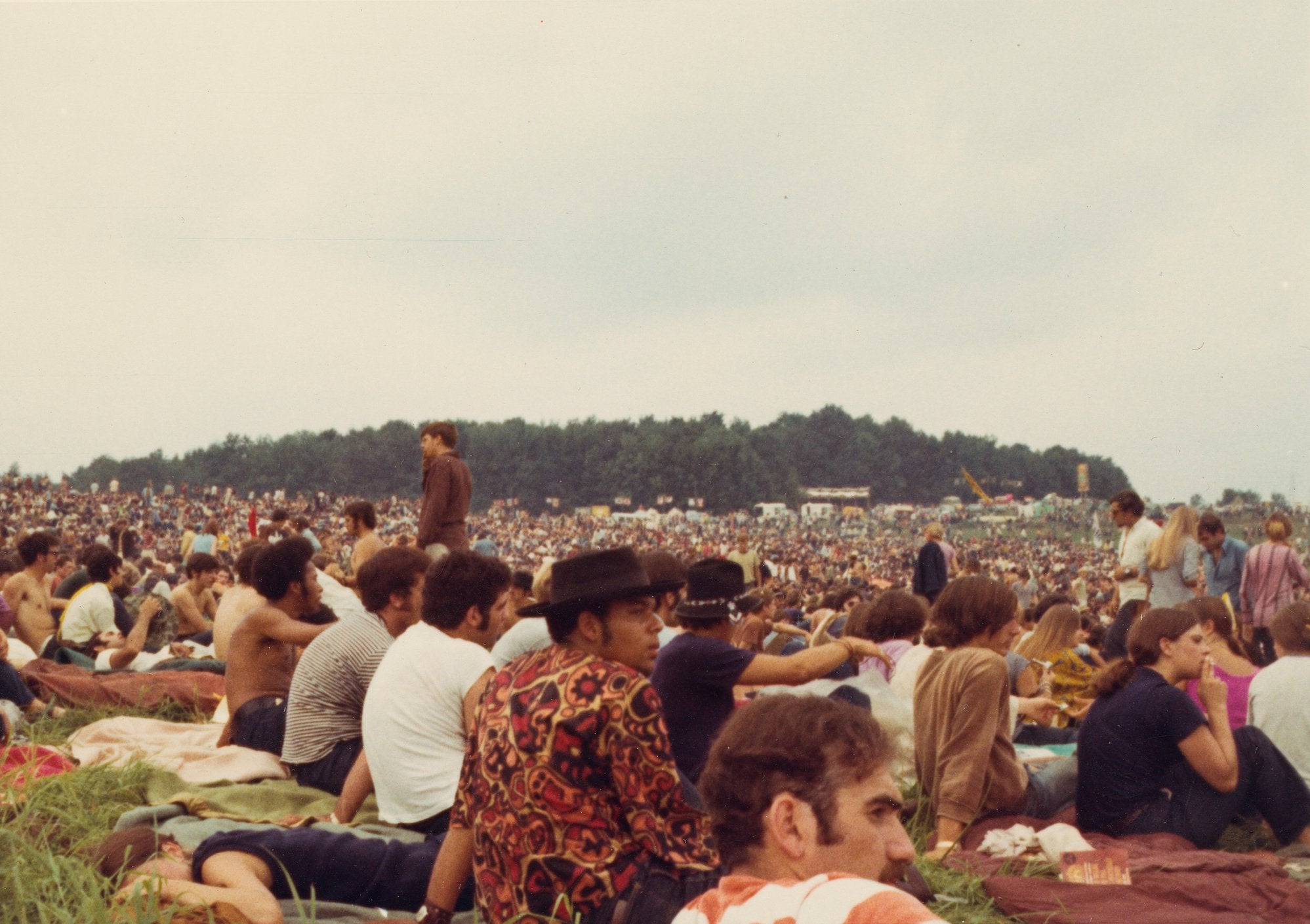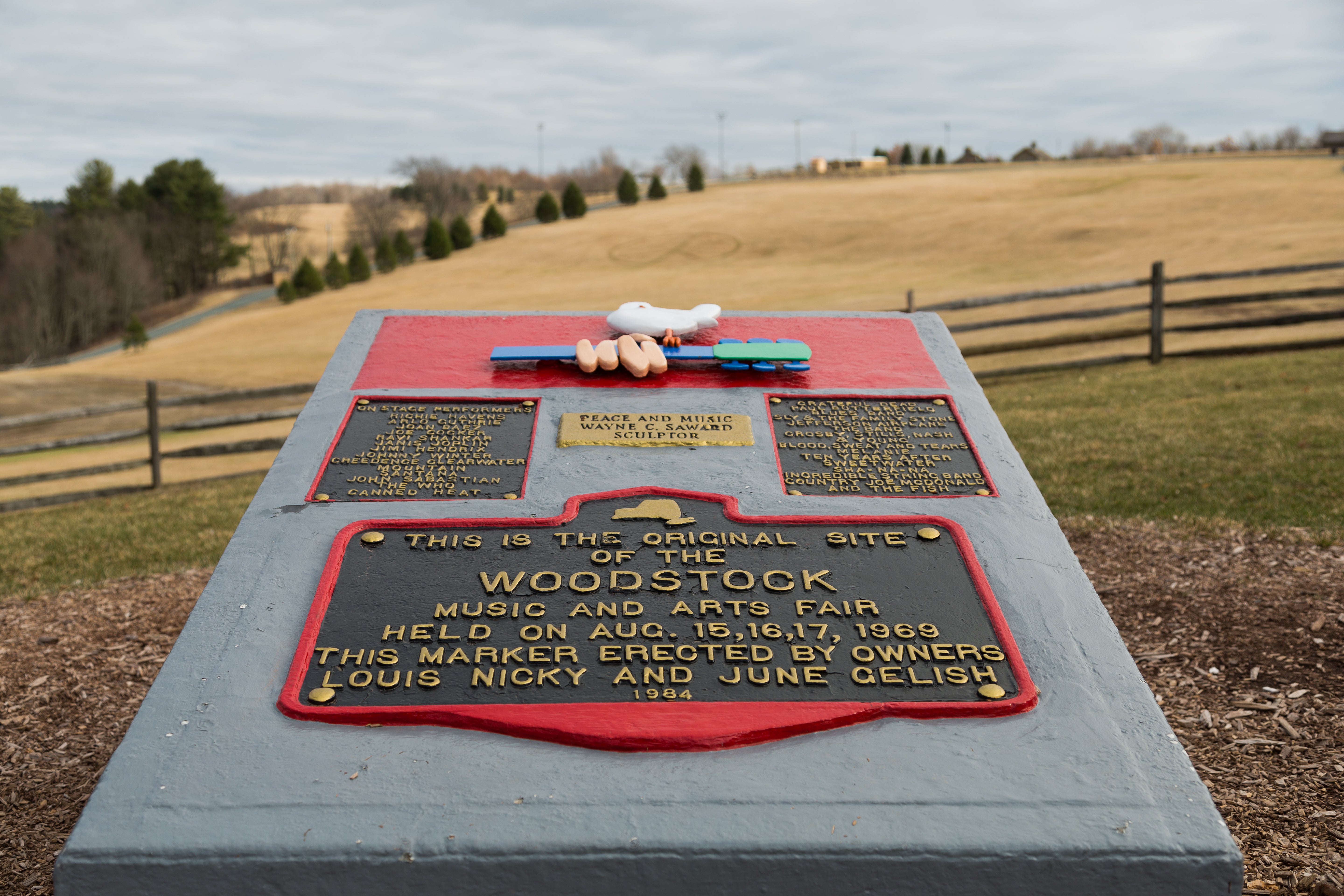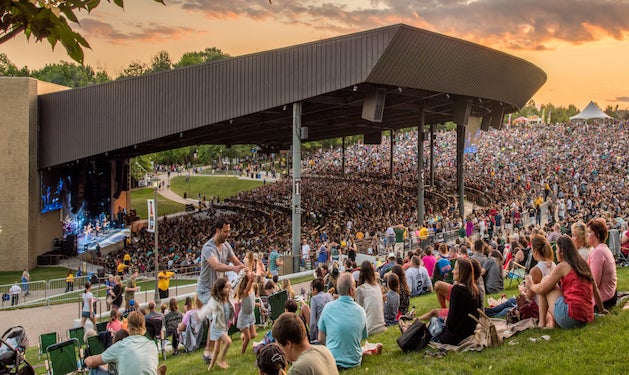The Museum at Bethel Woods Oral History Intern David Gain reflects on his experience working at the historic site.
There are stories everywhere if you stop to listen.
In the past year, we’ve all learned how important it is to go outside. Even a small stroll down your driveway can feel like a great expedition into the unknown. More than offering adventure, nature gives us a sense of peace and freedom from our busy lives. Whenever we feel stressed, we retreat into the outside and spend time with our memories; stories have a way of making everything feel alright.
I found myself thinking about this as I drove from the Cooperstown Graduate Program to Bethel. Having worked with The Museum at Bethel Woods for five months collecting oral histories, I had the opportunity to interview attendees about their experiences at Woodstock. This particular day, I was driving for my final site visit.
During the two-hour trip, I was greeted by the breathtaking landscape of central New York and the clusters of towns that make it a place worth living in. Cresting the hills in Bethel, I thought back about everything I had learned this year and how it changed my understanding of the land itself.
The Land at Woodstock
Max Yasgur’s 37-acre field looked radically different in August 1969 than it does now. What was once farmland has been converted into festival grounds, complete with a rotating concert stage at the heart.

gift of Ted Berard.
For three days, man-made constructions lived in harmony with the grassy hills. Concession stands offered hot dogs and other fare across the way from artist booths in the wooded Bindy Bazaar. When the rain tried to drown out the music with mud, the attendees simply took a dip and washed their inhibitions away in the nearby Filippini Pond.
To get there, some rode buses, motorcycles, bikes, and even horses to the concert site. While the music drew them in, their memories are filled with small wonders; bees hiding in haybales, selling bacon and eggs to a gracious guest, and even sharing cookies and milk with the Yasgurs.
There were 450,000 people on this island of love—the ocean, a sea of vehicles stretching beyond Bethel and into the screens of televisions around the country. On Monday morning, Jimi Hendrix took the stage and put his soul into the "Star-Spangled Banner," ringing in the land of the free to veterans and antiwar protestors alike.
For three days the attendees, performers, and crew were united on farmland in rural New York, forever stamping the pastoral landscape into the memory of our nation.
Coming Back to Woodstock
When Jimi Hendrix ended his set Monday morning, everyone still present began the long journey home. But they could never forget Woodstock.
For one attendee (and Bethel Woods volunteer), the outdoor venue spurred interest in the environment. She worked with students in promoting sustainability on the first Earth Day in 1970. Another attendee later moved to Greece; the calm breezes and relaxed attitude still bring his thoughts back to the festival.
For others, these memories pull them back to the site. One married couple takes every new car to Bethel, thinking back on the days they were both there without knowing it and the memories they’ve shared together since. Another volunteer has walked the festival grounds, waiting for the chill up his spine he’ll feel when he finds the spot he stood decades prior.
Then there’s the monument. On this little patch of land to ourselves, people come back to be alone with history. Attendees come to be with themselves and their memories, gazing out onto the field, and sometimes sharing their stories with those who ask. But for many, it is a chance to gaze over the hill and into the past itself.
Woodstock Today
My most recent visit to Bethel Woods marked the end of my internship there. I spoke with museum staff about my experiences interviewing attendees and everything I had learned about the festival of peace and love. We ate lunch outside, discussing how archaeology has added more to our understanding of the Bindy Bazaar.
It led me to think about how much of the original site is still around because of the dedicated efforts of Alan Gerry and Bethel Woods Center for the Arts. The Bindy Bazaar’s old footpaths are still yielding their secrets in the woods, and the festival hill still flows gently into the waiting pond. Today, guests can walk the land with a guided Augmented Reality Tour, stepping back and forth between 1969 and today.

What surprised me most when working with Bethel Woods was realizing that the landscape itself is an artifact. I had collected oral histories and been through the exhibit, gazing at clothing, broken fences, and vehicles. However, outside the Museum’s doors is the earth attendees stood on. Today the music often radiating from the concert pavilion fuses through time with the sounds of the festival from over 50 years ago.
Every time you step onto the field, you are stepping onto history itself—if you listen carefully, you can hear the story it is trying to tell.
